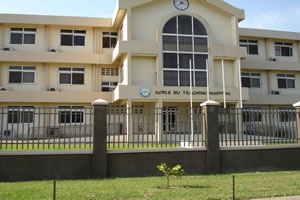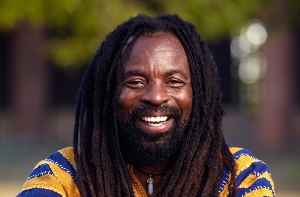The Korle-Bu Teaching Hospital (KBTH) will next year start the construction of annex blocks for the Surgical and Maternity Wards to enhance access to improved health care.
It would also construct a new 1,500 capacity mortuary to augment the existing 600 -capacity facility.
Dr Daniel Asare, the Chief Executive Officer (CEO), who announced this at a media engagement, in Accra on Wednesday, said an Institute would be attached to the new mortuary to train attendants.
It would also have facilities to segregate the duties of attendants to make them more efficient.
Next year, the premier hospital, the CEO said, would also start implementing its Centenary Strategic Plan towards transforming the Hospital and positioning it as the preferred stationary care organisation.
He appealed to the Ministry of Health to build a Hospice for it to decongest and reduce the pressure on the Emergency Rooms.
This would help medical practitioners to receive and attend to new emergency cases at all times and thus help solve the ‘No bed Syndrome’.
It would also help to maximise the comfort of such patients by reducing their pain, and also address their physical, psychological, social and spiritual needs with the support of health professionals.
The lack of a hospice, he said, led to people abandoning their terminally ill relatives at the Emergency Rooms.
A hospice is a facility that takes care of terminally ill patients, who have exhausted all treatment options.
Sharing some of the Hospital’s success stories in the past year with the media, Dr Asare said the Hospital it had acquired advanced technology equipment and devices, which had led to clinical achievements with regard to surgeries in urology, trauma, plastic and vascular surgeries and renal transplants.
“After the renal transplant, patients can then stop their weekly dialysis and live their normal lives,” he stated.
The Board of the Hospital, after its inauguration in 2018, was faced with numerous challenges, which included broken-down machines at the Radiology Unit, lack of medicines, staff agitations, and management members overstaying their terms.
“There were also problems of financial difficulties, human resource and the no bed syndrome due to both direct indirect causes,” he added.
It, therefore, took the task of ensuring the transformation of the Hospital into a Centre of Excellence as well as to redeem its image.
Consequently, 1,500 medical staff had been recruited.
There had also been an expansion of space and facilities in the ER towards addressing the no bed syndrome.
With its paperless healthcare service, there had also been a significant increase in Out Patients Department (OPD) attendance, waiting time had drastically reduced, while revenue had tripled, he said.
It planned to construct a new Accident and Emergency Centre; as well as a new Child Health Emergency Unit.
Dr Asare, however, called for a media partnership to educate the public on the need to promptly report to the hospitals when they felt unwell.
He urged both private and public hospitals to only refer cases that needed emergency care to the tertiary hospital to prevent congestion at the tertiary facility
The journalists were taken on a tour to areas, such as the MRI and CT Scan units to see some of the latest machines and how they were operated.
General News of Thursday, 19 December 2019
Source: GNA

















